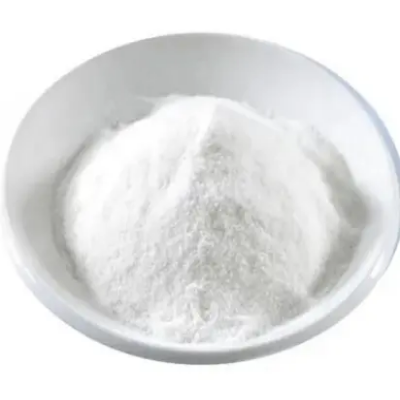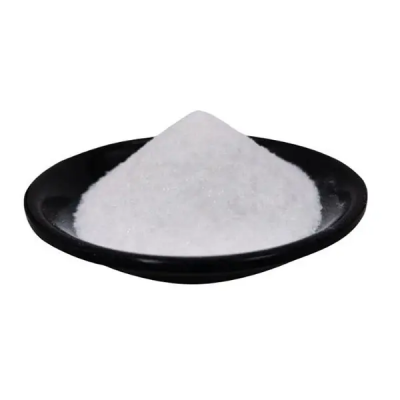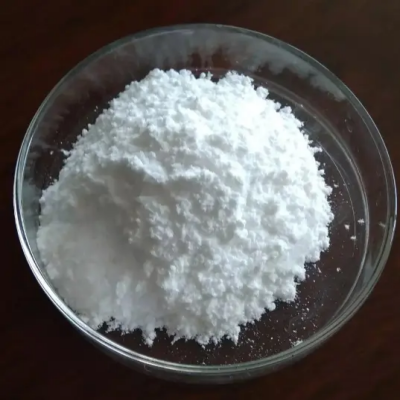(1R,3R)-9H-PYRIDO[3,4-B]INDOLE-3-CARBOXYLIC ACID, 1,2,3,4-TETRAHYDRO-1-(3,4-METHYLENEDIOXYPH ENYL), METHYL ESTER, HYDROCHLORIDE CAS:171752-68-4
(1R,3R)-9H-Pyrido[3,4-b]indole-3-carboxylic Acid, 1,2,3,4-Tetrahydro-1-(3,4-methylenedioxyphenyl), Methyl Ester, Hydrochloride is synthesized through intricate organic reactions utilizing commercially available starting materials. The synthesis involves controlled cyclization reactions to form the pyridoindole ring system, followed by fusion with the tetrahydrofuran ring and introduction of the methylenedioxyphenyl group. Careful manipulation of reaction conditions ensures regioselectivity and high yield, producing a compound suitable for further investigation and application. Synthetic Routes The synthesis begins with the formation of the pyridoindole ring through precise cyclization reactions, aiming for specific regiochemistry to position substituents correctly. Subsequent steps involve the fusion of the tetrahydrofuran ring and functionalization with the methylenedioxyphenyl group, requiring specialized reagents and conditions to achieve the desired structure and purity of the final product. Chemical Properties and Reactivity (1R,3R)-9H-Pyrido[3,4-b]indole-3-carboxylic Acid, 1,2,3,4-Tetrahydro-1-(3,4-methylenedioxyphenyl), Methyl Ester, Hydrochloride exhibits distinctive chemical properties arising from its complex molecular architecture. The presence of the pyridoindole core fused with a tetrahydrofuran ring and methylenedioxyphenyl moiety provides unique reactivity, offering opportunities for diverse organic transformations and potential interactions with biological targets. Understanding its chemical behavior is crucial for exploring its therapeutic potential and designing novel compounds for medicinal applications. Biological and Pharmacological Significance The compound holds promise for various biological activities that could be leveraged for pharmaceutical purposes. Its structural complexity suggests roles as a molecular scaffold for designing compounds targeting specific biological receptors or enzymes, potentially valuable in drug discovery and development. Investigating its interactions with biological systems is essential for evaluating its pharmacological profile and optimizing its therapeutic potential. Applications in Medicinal Chemistry (1R,3R)-9H-Pyrido[3,4-b]indole-3-carboxylic Acid, 1,2,3,4-Tetrahydro-1-(3,4-methylenedioxyphenyl), Methyl Ester, Hydrochloride serves as a critical intermediate in medicinal chemistry for synthesizing analogs with tailored properties. Structural modifications around the pyridoindole, tetrahydrofuran, and methylenedioxyphenyl groups can significantly influence factors such as bioactivity, solubility, and metabolic stability, crucial for optimizing drug candidates. Its versatility makes it suitable for designing compounds aimed at addressing diverse therapeutic targets and diseases. Conclusion (1R,3R)-9H-Pyrido[3,4-b]indole-3-carboxylic Acid, 1,2,3,4-Tetrahydro-1-(3,4-methylenedioxyphenyl), Methyl Ester, Hydrochloride represents a significant compound in the fields of medicinal chemistry and organic synthesis, characterized by its intricate molecular structure and potential biological activities. Its synthesis pathway and chemical properties provide a foundation for further exploration in pharmaceutical research, highlighting its role in advancing drug discovery efforts. Continued investigation into its reactivity and interactions with biological systems is expected to unveil new therapeutic opportunities, underscoring its relevance in scientific and pharmaceutical innovations.



| Composition | C20H19ClN2O4 |
| Assay | 99% |
| Appearance | white powder |
| CAS No. | 171752-68-4 |
| Packing | Small and bulk |
| Shelf Life | 2 years |
| Storage | Store in cool and dry area |
| Certification | ISO. |


![(1R,3R)-9H-PYRIDO[3,4-B]INDOLE-3-CARBOXYLIC ACID, 1,2,3,4-TETRAHYDRO-1-(3,4-METHYLENEDIOXYPH ENYL), METHYL ESTER, HYDROCHLORIDE CAS:171752-68-4 Featured Image](https://cdn.globalso.com/xindaobiotech/1ZNB2ZF342ZWRNG294.png)
![(1R,3R)-9H-PYRIDO[3,4-B]INDOLE-3-CARBOXYLIC ACID, 1,2,3,4-TETRAHYDRO-1-(3,4-METHYLENEDIOXYPH ENYL), METHYL ESTER, HYDROCHLORIDE CAS:171752-68-4](https://cdn.globalso.com/xindaobiotech/1ZNB2ZF342ZWRNG294-300x300.png)





